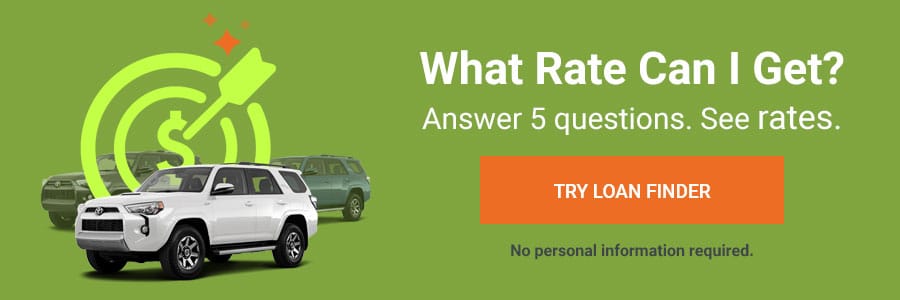Economic woes are driving up the cost of car payments, but you still have options to lower yours.
Unlike your car in the summer sun, the economy’s not doing too hot. Average household debt rose by $266 billion in the first quarter of 2022, with auto loan balances making up $11 billion of that increase.
Monthly car payments have risen alongside loan balances, too. As of July 2022, the average monthly payment for a new car rose to a record high of $733. Inflation, supply chain issues, and the global chip shortage are among the many factors causing car payments to rise.
Taking action to reduce your average monthly car payment can help you keep more money in your pocket at a time when you likely need it most. However, the right course of action for you depends on your specific financial situation and goals.
Why Are Average Monthly Car Payments at Record Highs?
Before a lender makes a loan offer to a borrower, it considers a variety of factors to determine the loan’s interest rate and calculate its total balance. Some of these factors are based on your financial choices and situation, such as your credit score, payment history, and income.
Other factors are outside of your control and are influenced by economic events, such as inflation and efforts to manage and slow it.
According to the Bureau of Labor Statistics, which uses the Consumer Price Index to measure inflation, the rate of inflation was 8.5% between July 2021 and July 2022. This is a slight decline from the previous month’s inflation rate of 9.1%, which was the largest increase since 1981.
As inflation rises, the Federal Reserve, or Fed, raises minimum interest rates. Higher interest rates result in consumers paying more interest over the life of their car loans and other debt, increasing the cost of financing a vehicle purchase.
But inflation isn’t the only factor contributing to high monthly auto payments. Supply chain issues and the global chip shortage, triggered by the COVID-19 pandemic, slowed down vehicle manufacturing.
The resulting lack of available inventory drove up vehicle prices. And even though chip manufacturing is increasing, some automakers plan to maintain low inventories so that prices remain high.
What factors impact monthly auto loan payments?
Your monthly payment amount isn’t just affected by external factors like minimum interest rates or manufacturing delays. It’s also influenced by your:
Put simply, every borrower’s experience is unique. The average monthly payment for your car loan might end up much more affordable than the national average. On the flip side, a poor credit history or your decision to finance a luxury car purchase means you might end up paying far more than the national average.
How Can I Lower My Average Monthly Car Payment?
Though it might feel like the chips are stacked against you, you don’t need to get stuck with a high average monthly car payment with your next car purchase. Similarly, there are options to lower your monthly payment if you already have an auto loan tied to a high monthly payment.
Make a large(r) down payment
When you buy a new car, your lender expects you to make a down payment in cash or via check before financing the rest of the purchase. Putting money down makes you assume some of the risk of the loan and reduces the amount of money you need to borrow.
Your down payment is, effectively, applied to the principal loan balance. Not only are you financing a smaller car purchase, but you’re reducing the principal balance on which interest is calculated.
In other words, the larger your down payment, the less interest you’ll pay over time — something that’s especially important when interest rates are high.
Let’s say you’re financing a car purchase with a $24,000 MSRP, a 48-month term, and an interest rate of 5%:
| Down payment |
Total loan interest |
Monthly loan payment |
| $1,000 |
$2,424.34 |
$529.67 |
| $2,500 |
$2,266.23 |
$495.13 |
| $5,000 |
$2,002.72 |
$437.56 |
By putting more money down, you can lower your monthly car payment from the get-go, saving heaps of money over the long term.
Shop around for the best auto loan rates
According to a 2020 estimate from the National Bureau of Economic Research, 80% of car loans are obtained via dealerships. Though this is convenient for car buyers, it’s not always the most affordable option because dealerships are legally permitted to apply a 1% to 2% markup on top of a loan’s buy rate.
This markup provides the dealership with compensation for finding a loan on your behalf. But it also means you’re on the hook for a higher loan payment than if you shopped around with several banks and credit unions.
Avoid dealership markups by using a loan finder tool or calculator to estimate your rate. With that rate in mind, begin applying for loans with different banks and credit unions to compare offers.
Ideally, search for — and choose — an auto loan with terms and features you find acceptable, including a competitive interest rate and low monthly payment.
Take out a longer-term auto loan
Your loan term — the length of time over which you agree to pay off your loan — has a significant effect on your monthly car payment.
Shorter loan terms generally correspond to the highest monthly payment, whereas longer loan terms result in lower monthly payments. According to Edmunds, 36% of borrowers financing the purchase of a new vehicle in June 2022 chose a loan term between 73 to 84 months.
This can improve the affordability of your monthly car payment, but long loan terms come with a trade-off: The longer your term, the more interest you’ll pay over the life of your loan.
For example, suppose you’re taking out a car loan for $24,000 with a 5% interest rate:
| Loan term (months) |
Total loan interest |
Monthly loan payment |
| 24 |
$1,269.92 |
$1,052.91 |
| 36 |
$1,894.86 |
$719.30 |
| 48 |
$2,529.75 |
$552.70 |
| 60 |
$3,174.58 |
$452.91 |
| 72 |
$3,829.32 |
$386.52 |
| 84 |
$4,493.96 |
$339.21 |
So, even though you’re paying less per month with a long loan term, you’ll pay more overall because interest accumulates over a longer period.
That said, sometimes a loan with a long term might be the only way you can fit a car payment into your budget. In other cases, you might want to extend your loan term to reduce your monthly expenses and divert your income to other bills and debt, especially when everything seems to be going up in price.
Sell or trade in your car
You can eliminate your monthly auto payment by getting rid of the vehicle you’re paying for. Selling or trading in your car can give you the cash to pay off your loan in full.
If there’s anything left over, you can then buy a used vehicle in cash or make a dent on a new loan through a down payment.
In fact, now might be the best time to sell or trade in your car. The average price of a used car is still higher than usual, but it’s starting to drop. To get the most bang for your buck, it’s best to capitalize on these trends before the car market returns to normal.
However, if your car loan is upside down or subjects you to prepayment penalties, you might be better off keeping your current car.
Similarly, selling or trading in your car might not make the most financial sense if you have a bad credit score and hope to finance a new or used car purchase. Because a loan’s interest rate is partially based on the strength of your credit, you might wind up with one that’s exceptionally high.
Lease a car
When you lease a car, you’re only financing the vehicle’s depreciation (and any interest that accumulates) over the lease period. This often results in an average monthly car payment that’s below what you’d pay if you took out a loan to buy the car, especially if you flex your negotiating skills.
According to the Q2 2022 Experian State of the Automotive Finance Market report, the average payment difference between financed and leased vehicles is $127. Given that the average lease term is around 35 months, you could save $4,445 when leasing a vehicle versus financing a new or used car.
If you end up falling in love with the car or are better situated to make a purchase, you can opt for a lease buyout loan to take ownership of the vehicle. Planning for this route might make sense if you’re willing to bet that your financial situation, the economy, or both will be healthier when your lease expires.
Refinance your auto loan
Refinancing a car loan replaces your existing loan with a new one. The process of refinancing your car loan is similar to when you first applied for your original loan. Start by using an auto refinance calculator to estimate your savings, then shop around for the best rates from various lenders to find the best deal and terms.
Though you need to qualify for a refinance — just as you did when you took out your auto loan for the first time — you have the opportunity to do so from a stronger position than your first time.
In other words, if you’ve improved your credit, increased your income, and reduced your debt between the first time you took out your loan and your attempt to refinance, you’ll likely come away from the deal with a heap of savings.
In fact, according to the 2022 RateGenius State of Auto Refinance report:
- The average monthly car payment fell by $97 after refinancing
- 19% of borrowers who refinanced their auto loan lowered their monthly payment by $150 or more
- 56% of borrowers who refinanced their auto loan lowered their monthly payment by $50 to $149
You don’t need to wait long to refinance, either. On average, borrowers refinanced their auto loan 16.7 months into their original loan term in 2021. Remember that the earlier you refinance your loan, the less interest you’ll pay on it.


Can Buying a Used Car Help Me Secure a Lower Auto Loan Payment?
Until recently, common sense told us that used cars had better affordability than new vehicles. After all, used vehicles tend to have character — dents, dings, and wear and tear — as well as high mileage.
Fortunately, used car prices are dropping, but they’re still 6.6% higher than they were last year, with an average cost of $28,219 in July. This means you’re more likely to have a lower monthly car payment by purchasing a used vehicle versus a new one.
However, because Americans are holding onto their vehicles for longer than usual, you might have to settle for an older make and model than you were hoping for.
High Average Monthly Car Payments Can Be Overcome
An increase in the average monthly car payment might make you feel annoyed, frustrated, or worried about the future. After all, it’s not the only rising expense you need to budget for.
But tackling a high monthly auto loan payment might be easier than you expect. Options are available to you to reduce your auto loan payment, whether you’re about to apply for financing or are looking for ways to lower what you already pay.
For a new loan, take steps to drive down the total amount you need to borrow. If you have an existing loan, consider replacing your car through a sale or trade-in. Or, refinance your car loan if it’ll result in a lower interest rate and average monthly car payment.
;)



